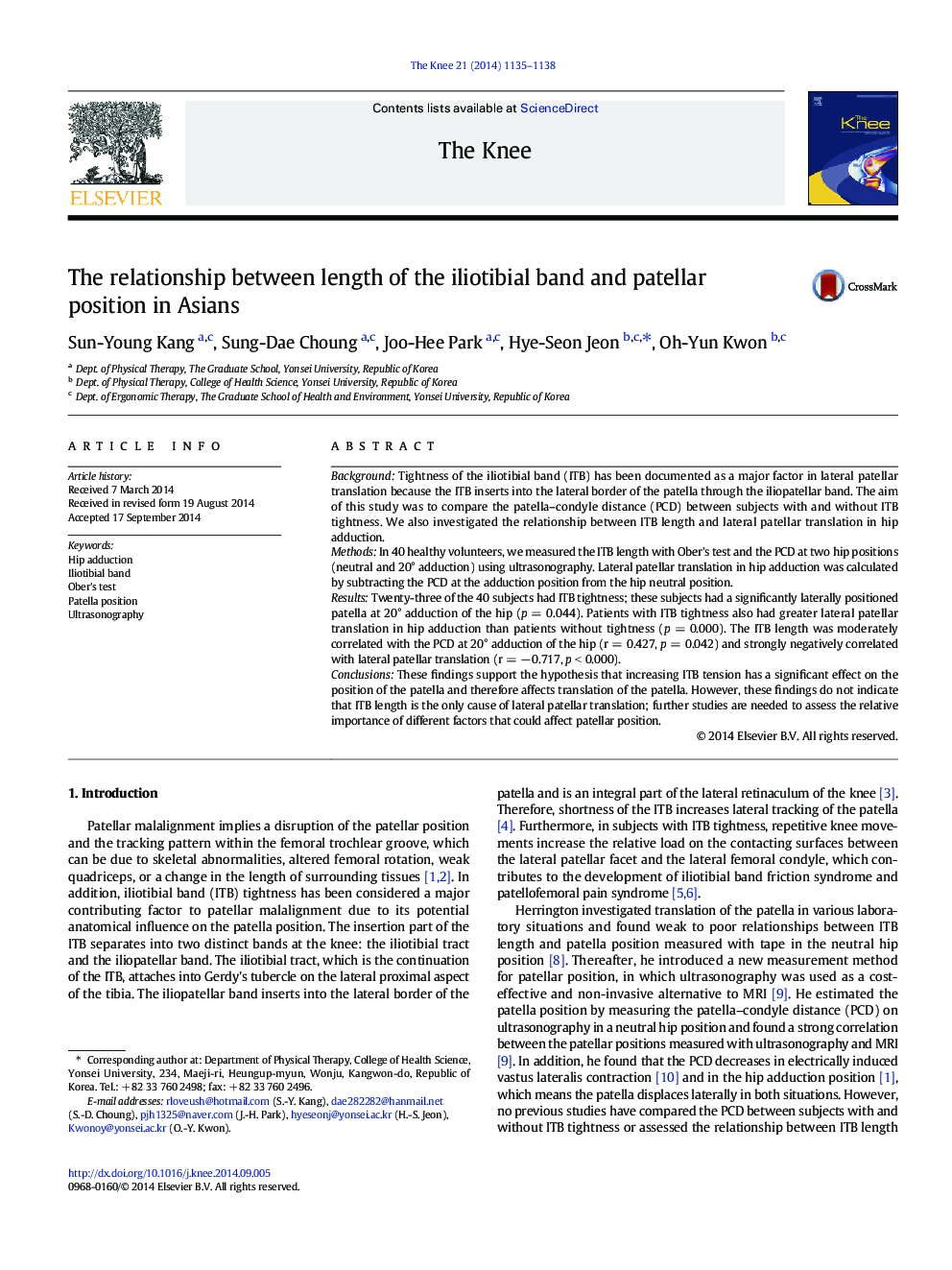| Article ID | Journal | Published Year | Pages | File Type |
|---|---|---|---|---|
| 6211343 | The Knee | 2014 | 4 Pages |
BackgroundTightness of the iliotibial band (ITB) has been documented as a major factor in lateral patellar translation because the ITB inserts into the lateral border of the patella through the iliopatellar band. The aim of this study was to compare the patella-condyle distance (PCD) between subjects with and without ITB tightness. We also investigated the relationship between ITB length and lateral patellar translation in hip adduction.MethodsIn 40 healthy volunteers, we measured the ITB length with Ober's test and the PCD at two hip positions (neutral and 20° adduction) using ultrasonography. Lateral patellar translation in hip adduction was calculated by subtracting the PCD at the adduction position from the hip neutral position.ResultsTwenty-three of the 40 subjects had ITB tightness; these subjects had a significantly laterally positioned patella at 20° adduction of the hip (p = 0.044). Patients with ITB tightness also had greater lateral patellar translation in hip adduction than patients without tightness (p = 0.000). The ITB length was moderately correlated with the PCD at 20° adduction of the hip (r = 0.427, p = 0.042) and strongly negatively correlated with lateral patellar translation (r = â 0.717, p < 0.000).ConclusionsThese findings support the hypothesis that increasing ITB tension has a significant effect on the position of the patella and therefore affects translation of the patella. However, these findings do not indicate that ITB length is the only cause of lateral patellar translation; further studies are needed to assess the relative importance of different factors that could affect patellar position.
